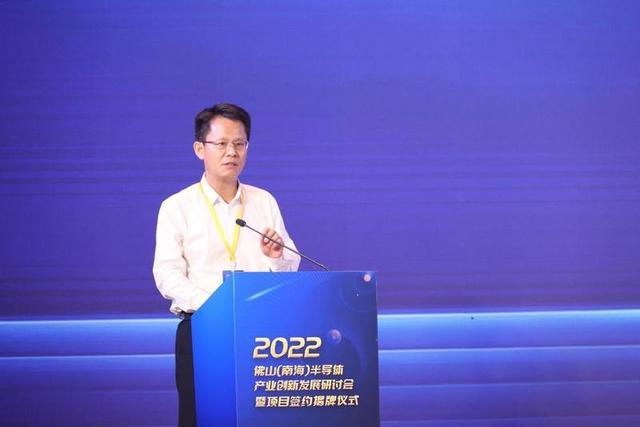Shenzhen Advanced Academy and Harvard University published the latest research: writing DNA passwords to give cell antiviral ability
Author:Shenzhen Evening News Time:2022.08.03
"Life is a string of complex passwords." Human beings have more than 20,000 genes, which stores all the information from growing to apoptosis. From the discovery of the DNA structure, to the interpretation and writing DNA, scientists spared no effort to explore the secrets of DNA, giving the law of life scientific significance.
On August 2nd, a study published in "Nature -Communication" provides a technical framework for using multi -composite base editing technology to convert the alkali -based sequence of genetic information into TAA in the human genome, and once again The transfection has successfully achieved the synchronization editing of up to 33 gene sites. In the future, it can be combined with protein engineering to give cell antiviral ability.

▲ Screenshot of thesis
This study provides directions and paths for mammalian genome, as well as genomic coding to prepare for multiple natural virus human cell lines.
Chen Yuting, Shenzhen Advanced College Synthetic Institute, Erica Hysolli, Ph.D. in Harvard Medical College, Chen Anlu, a doctor of Harvard University, and Stephencasper at Harvard University as the first author; George Church, a professor at Harvard Medical College, Liu Chenli, a researcher at the Shenzhen Advanced College Synthetic Institute, and Harvard University Medical Medicine The Ph.D. Erica Hysolli is the author of the common communication.
The "Mosic Code" of the Life Body
During the war, people passed the information through the Morse password. In the life body, there is also a series of "genetic passwords".
In the dual spiral structure of DNA, A, T, C, G are alkaline bases on their structure. Through different alkaline base pairing, they can eventually be arranged into 64 cryptons. This is the "genetic code" of life. 61 codons that can encode 20 natural amino acids, and 3 codons as terminal signals. The result is exactly the use of genomic coding technology to encode the "genetic password", which aims to give life or cells with antiviral capabilities.
In 2016, George Church and others proposed GP-WRITE, which aims to shift from passive read-to-genome to actively writing genomes and use biological engineering technology to solve many global problems facing humanity, such as virus infections, increasing endangered species, warm climate warming, etc. Essence In 2018, GP-WRITE sponsors proposed genomic codes to build antiviral human cell systems.
On this basis, the research team proposed a potential scheme to prepare the antiviral human cell line, that is, the termination codon tag to TAA within the whole genome, and replacing the endogenous authentication factors into selective reading with selective general reading The engineering mutant body has the ability to antibody.
In the early days of the study, in order to quickly and accurately locate the specific location of the DNA codons, the research team independently developed Grit software. "GRIT Software is like a 'search engine' that can search and locate the required codons in the whole genome, and at the same time can provide the guide RNA (GRNA) required to transform the codon. We used Grit software to identify All TAG codons in the human genome and synthesize the GRNA of TAG to TAA for alkaline -based editors, "Chen Yuting said.
Subsequently, they used multiple GRNA synchronous delivery and cytopine base editor (CBE) to stabilize the non -targeted chain C to T to modify it, successfully convert TAG to TAA, and through all genome sequencing, RNA sequencing, nuclear type, nuclear type Analyze the three methods of the conversion results of monoclonal cells. The results show that the transition successfully achieves synchronous editing of 33 gene sites, and did not observe the abnormal and obvious chromosomal abnormalities of cell gene expression.
The first step of the genetic coding takes the "antiviral"
Human genomic coding is a systematic and complex genome engineering. In this study, it is one of the difficulties to form a final system and operable working framework from identifying the location of the genome to multiple point gene editing, and then each realized technical link.
The research team lasted for 4 years. After several simulation, practice and verification, it successfully constructed the working framework of converting TAG to TAAS within the scope of the human whole genome. There are as many as 33 gene site editing in a clon.
This study took the first step of genomic coding to prepare for multiple natural virus human cell lines, which initially proved the feasibility of TAG to TAA in the human genome. Repeated sites synchronous base editing records provided a working framework for the large -scale engineering transformation of mammals genome.
Today, the technology of reading DNA passwords is becoming increasingly advanced, but the cell line of active, efficient, and multi -digit -edited DNA passwords to prepare antivirals is still a huge challenge.
"Although we have a phased breakthrough in multiple point gene editing technology, there are still many jobs that need to be done in the preparation of the antiviral cell line. , Protein engineering transformation, etc. "Chen Yuting said that the research team will use genomic coding technology to further study the ability of cellular antiviral ability." Through this research And re -coding the field of antiviral cells to conduct the next research together. "
Shenzhen Evening News reporter Zheng Shuyi correspondent Su Yan
Interviewed units confession
- END -
In the next five years, it invested 20 billion yuan!Foshan South China Sea advances into the semiconductor industry "track"

Wen, Figure/Yangcheng Evening News reporter Zhang Wen correspondent Chen YilinAs t...
2022 China Seed Conference and the opening

On July 28, the 2022 China Seed Conference and the Kaiman Silicon Valley Forum ope...